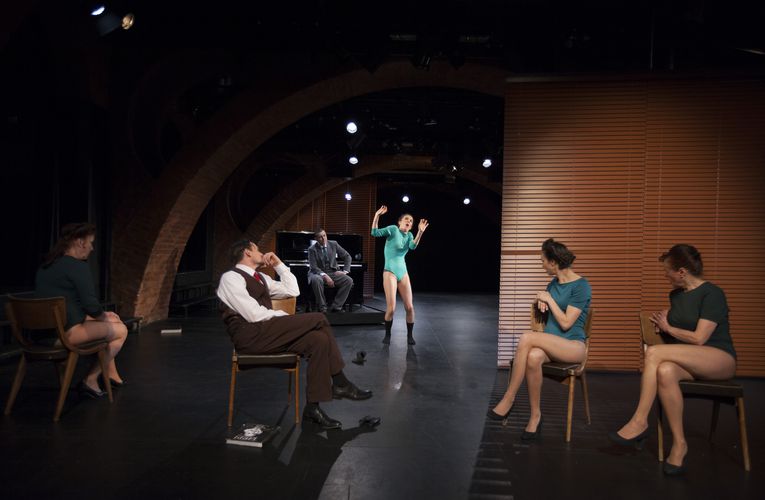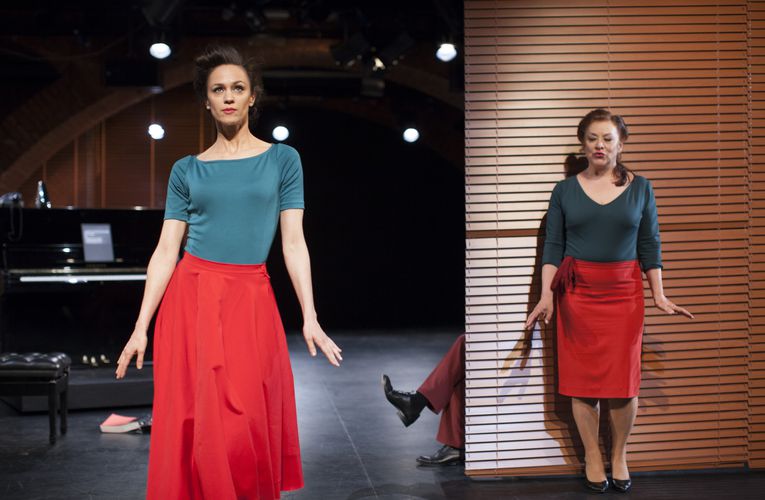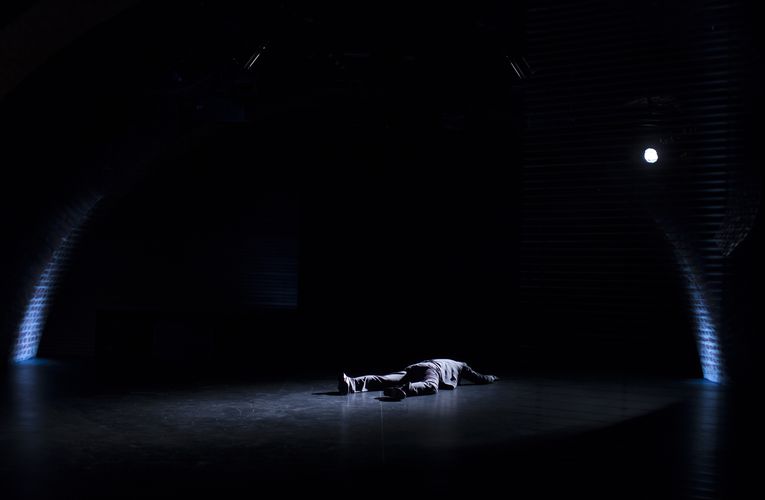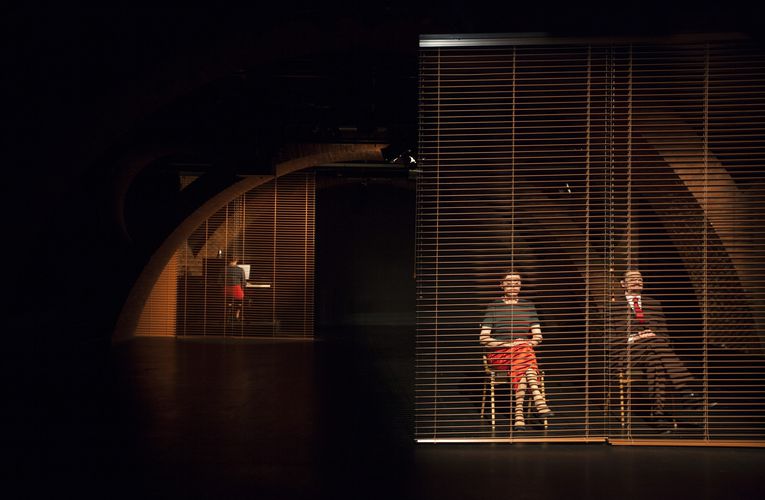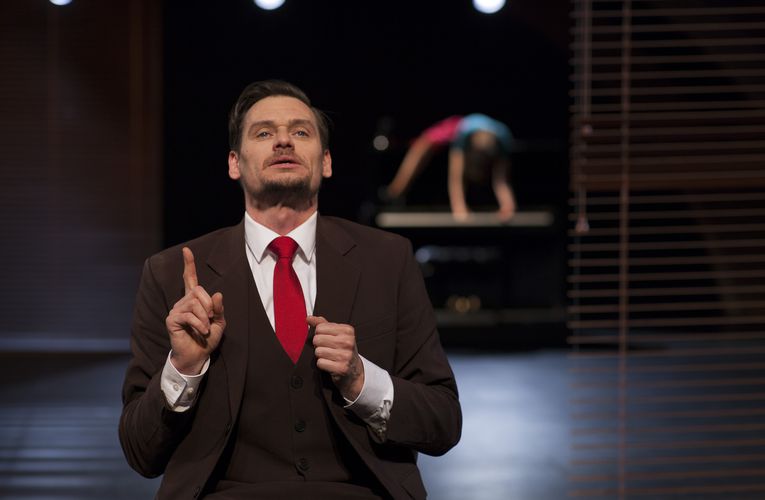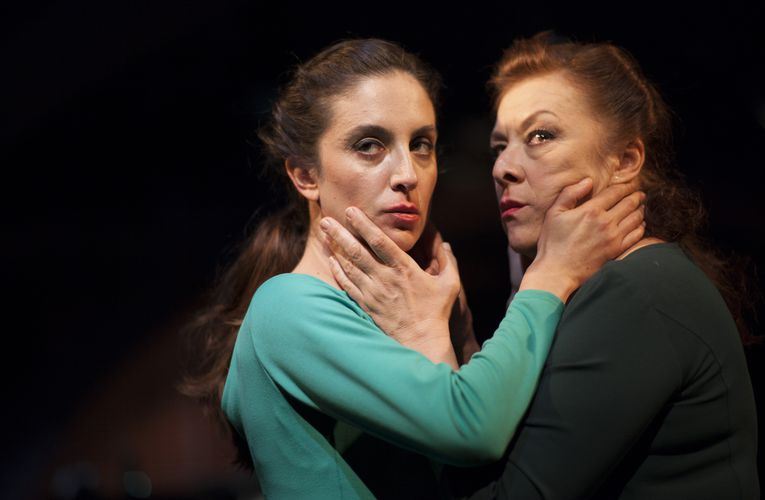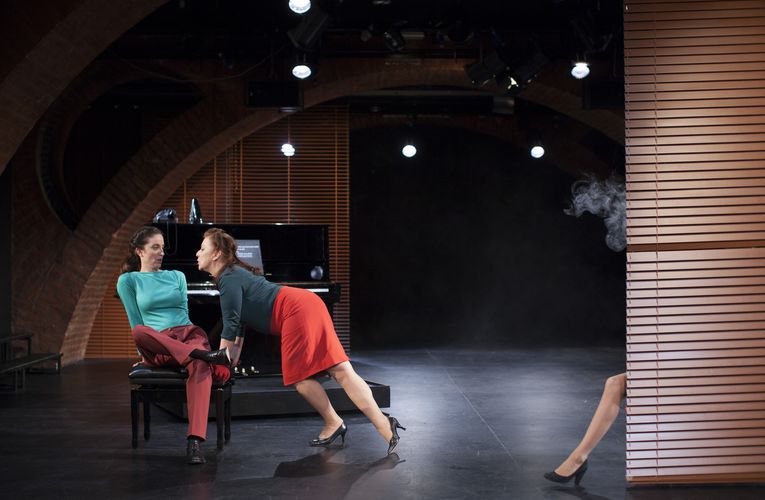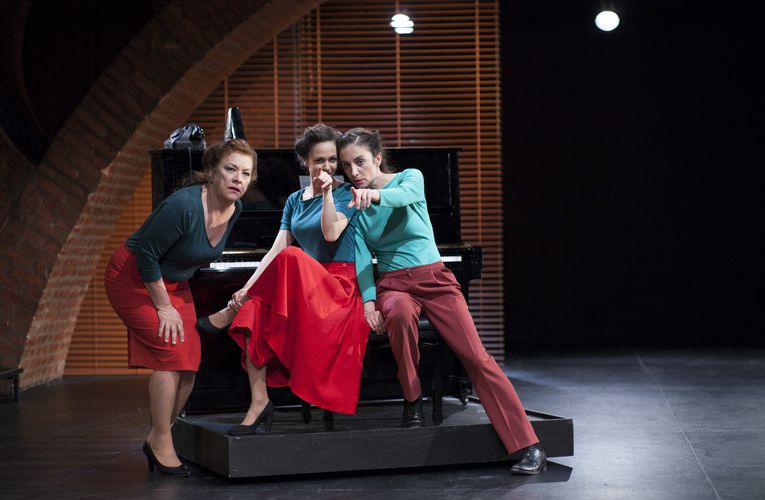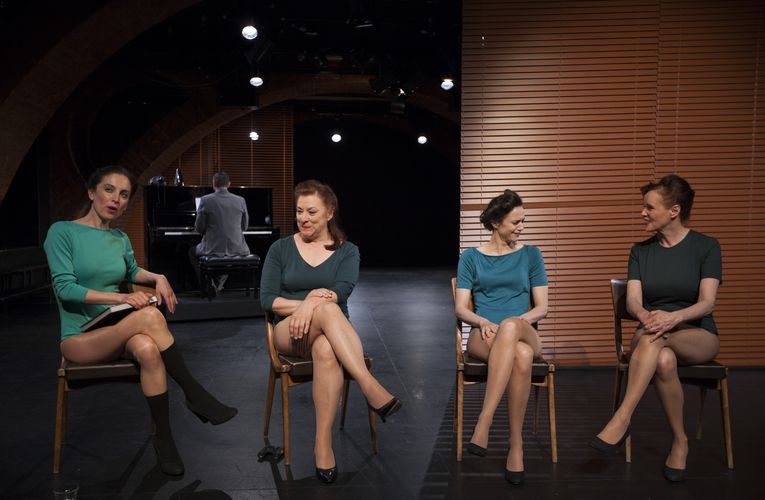Hitchcock
- Draga Potočnjak
- Text and dramaturgy: Agnieszka Jakimiak
- Set and costume design: Katarzyna Leks
- Choreography: Agata Maszkiewicz
- Directed by: Weronika Szczawińska
- Dramaturgy and music selection: Piotr Wawer jr.
- Translation: Tatjana Jamnik
- Language consultant: Mateja Dermelj
- Sound design: Slivo Zupančič
- Lighting design: David Cvelbar
- Interpreter and prompter: Špela Kopitar
- Expert from the field: Matjaž Marinič
- Make-up artist: Nathalie Horvat
- Stage manager: Gašper Tesner
Does every spectator see the same thing on the silver screen? If we watch Hitchcock’s films anew, it turns out that the memories from previous viewings mix with present-day expectations, the scenes that others have borrowed from the master alter the perception of the original and the image we have about his creativity influences the reading of this creativity. If we take an even closer look at Hitchcock’s films, we might notice that they’re a lot more entertaining, bizarre and atypical than perhaps we’ve come to expect. Hitchcock the performance focuses on what eschews control in Hitchcock’s films and talks with Hitchcock. Let’s look at a typical Hitchcock blonde that veers from a typical Hitchcock blonde, and the master of cinema who doesn’t fulfil the demands associated with the status of a master. Hitchcock’s cinematography is a factory of often unrecognised and controversial emotions, but also a space in which strictly defined identities – female, male, star, author – explode and show their disharmonies.
The performance is constantly approaching Hitchcock, and in principle simultaneously bounces off him, has him as its main source, but definitely doesn’t establish him as the only agent. A fresh directorial approach that causes the excellent ensemble to breathe in full and in different registers, chases the Hitchcockian suspense mostly with irony, but nevertheless in earnest. No matter how we look at it: theatre stage itself always remains a single cadre, in 'full shot'.
We can certainly speak of a fresh and specific directorial aesthetics brought to the stage by the young Polish team […]. By that we don’t mean a deliberately restrained aesthetic imagery of film classics from half a century ago […]. The aesthetics is mostly in the extraordinary composition of the stage through the choreography of bodies and props that is the equivalent of the way Hitchcock created his film imagery, as well as in the question of how to convey a message through the constellation of bodies and the construction of the stage image.
The young Polish team took Hitchcock to the stage and thought him, deconstructed him, constructed him, was inspired by him, ironized him, all this in connection to identity, gender, images and emotions. Its author Agnieszka Jakimiak, also the dramaturg of the performance, shed light on all the things that in Hitchcock’s film eschews control, all that is decidedly humorous, contradictory and perverted. Mostly entertaining, bizarre problems or re-evaluation of clichés linked to the film maker who left a mark on an era, it is presented by a performance that is constantly in a playful, critical distance to its ideal object of disembodiment. […] In short, the operation Hitchcock was a complete success and the patient, although dead, is theatrically unbelievably alive. […] We’ve never seen Hitchcock this entertaining before and in fact none of his famous explainers and interpreters of his opus has never pointed out explicitly this side of his powerful machinery the way this elements of the 'Polish' performance.
Hitchcock is the epitome of the psychoanalytical approach in cinema. Hence the creators of the eponymous performance approached the drama from the point of view of personality, gender and emotions. Inner life that turns into a drawing – in front of the spectators – like moving pictures do, sketches the construct of his typical elements that he loved to use to surprise or shock the spectator. Now the spectator in the theatre faces a similar situation. She or he watches scenes that are alienated from true Hitchcock elements, but wonders about the new with some sort of expectation of similarities. Searching for these related things she or he moves away from the core and stumbles upon new components that the creators of the performance embedded skilfully into the expected or the unexpected situations.
- Maribor Theatre Festival, Maribor, Slovenia, 25 Oct 2017
